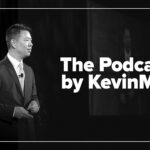Though many of the dollar-driven decision makers within health care would have us believe otherwise, we can’t AI, blood tests, or high-tech image our way out of our current U.S. health care mess. I learned this from having spent 40 years as a board-certified emergency physician and 50+ years as a chronic autoimmune disease patient. We must overtly acknowledge that all three of the above are simply supplemental tools. They can never substitute for a compassionate personal physician with a feeling heart and soul, who can be imitated by AI but can never be virtually realized. As patients, we are often in pain or discomfort, feel anxious and uncertain, and are understandably resentful because of those sensations. High tech alone will never be able to see us as we truly are. Any digital representations of our suffering are necessarily insensate, will always be a pale imitation of our lived reality, and are no substitute for a trusting patient-physician relationship (a “partnership” as I would have it). We are truly a complex biopsychosocial species. The dually qualified physician (internal medicine and psychiatry), Dr. George L. Engel, presciently shared this insight in 1977:
“The boundaries between health and disease, between well and sick, are far from clear and never will be clear, for they are diffused by cultural, social, and psychological considerations. The traditional biomedical view that biological indices are the ultimate criteria defining disease, leads to the present paradox that some people with positive laboratory findings are told that they are in need of treatment when in fact, they are feeling quite well, while others feeling sick are assured that they are well, that is, they have no ‘disease’.”
Unfortunately, almost 50 years later, the health care enterprise, particularly here in the United States, including both the patient and the physician side of our interactions, has been stubbornly reluctant to adjust to Engel’s observation. It is understandable that both as patients and physicians, we prefer medical certainty over the complexity of Engel’s completely accurate but deeply unsatisfying phrasing, “far from clear and never will be clear.”
Capitalizing on that reluctance and inherent uncertainty, corporate and personal enrichment to the tune of billions of dollars has subjected us to the ascendant but less effective and more expensive “consumer-provider” model of health care. Both revealing and frightening is the degree to which this “margin over mission” decision-making has become acceptable as a given. So much so that there is little hesitation now to say the quiet parts out loud! “People need primary care but not necessarily a physician relationship.” said the CEO of a multibillion-dollar health care system, with 30 years of experience in health care, when asked, “What’s one conviction in health care that needs to be challenged?”
Even more egregiously, “Is curing patients a sustainable business model?” asked a Goldman Sachs analyst regarding a new medication’s>90 percent cure rate for hepatitis C. It has apparently reached the point now where we can talk out loud about purposefully not curing medical conditions because that might reduce the “incident pool.” This, in turn, would reduce the ability to transmit the virus to new patients/consumers, thereby affecting the bottom line!
Adding to our “mess” is the fact that some of us get far more medical care than we need, while many more have trouble even accessing our health care system equitably. If you are one of the “haves” rather than the “have-nots,” you can elect to get a whole-body MRI scan for a mere $2,500, just by requesting it, no doctor’s evaluation required. There is also the option now of ordering your own lab tests, “choosing from over 2,100 tests, No doctor needed.” In the service of efficiency and patient satisfaction we physicians can find ourselves at times contributing to this “wasteful” testing. Though AI has demonstrated the ability to pass the cold sterile U.S. medical licensing examination, in the hot, often bleeding, real-world ED setting it arrived at only 50 percent of correct diagnoses, even missing a potentially life-threatening ectopic pregnancy diagnosis!
My takeaway here is that having the money to afford and the desire/anxiety to request high-tech testing is a poor substitute for guided medical advice from a personal physician who knows you well and by whom you feel known. In fact, multiple medical studies show that a more personal connection with a qualified primary care physician leads to lower health care costs for advice that you are more likely to follow through with, and by which you ultimately experience better health and a full halving of your mortality rate risk!
Do we really question the healing power of being physically and emotionally touched, something that tech can simulate but can never really do? In our commoditization of the health care interaction, we have de-emphasized the time we patients can spend with our physicians, almost completely eliminating the physical exam; it’s far faster and more remunerative to simply order tests than to spend time determining if they are truly necessary.
We are all susceptible, patients and physicians alike, to being ensnared by this current in-vogue consumer-provider model; it is deceptively appealing because it favors more and faster health care interventions. This model is being aggressively, but erroneously, promulgated as equivalent to a sustained patient-physician relationship. For purposes of maximizing profits, it draws a false equivalence between a physician’s lengthier and more demanding period of training and acquisition of expertise compared with that received by non-physician “providers.” It is predicated on the additionally false notion that any warm body will do in terms of who we willingly reveal our suffering to, place our trust in, and stake our welfare and very lives upon. This model is now seeking to convince us that, actually, a warm body with a caring heart and soul turns out to not even be necessary and that a soulless artificial intelligence (AI) will suffice (it being a mere coincidence that AI does not require a sustained salary or benefits package).
We should all be alarmed at the fact that, here in the U.S., we appear to be on the verge of concluding that the richest nation on the planet cannot afford to provide a personal physician interaction for each of us. To combat this, it is paramount that we resuscitate the patient-physician relationship before business interests declare it dead and buried.
Drew Remignanti is an emergency physician.




















![Preventing physician burnout before it begins in med school [PODCAST]](https://kevinmd.com/wp-content/uploads/The-Podcast-by-KevinMD-WideScreen-3000-px-4-190x100.jpg)



![Why high-quality embryos sometimes fail to implant [PODCAST]](https://kevinmd.com/wp-content/uploads/Design-3-190x100.jpg)
